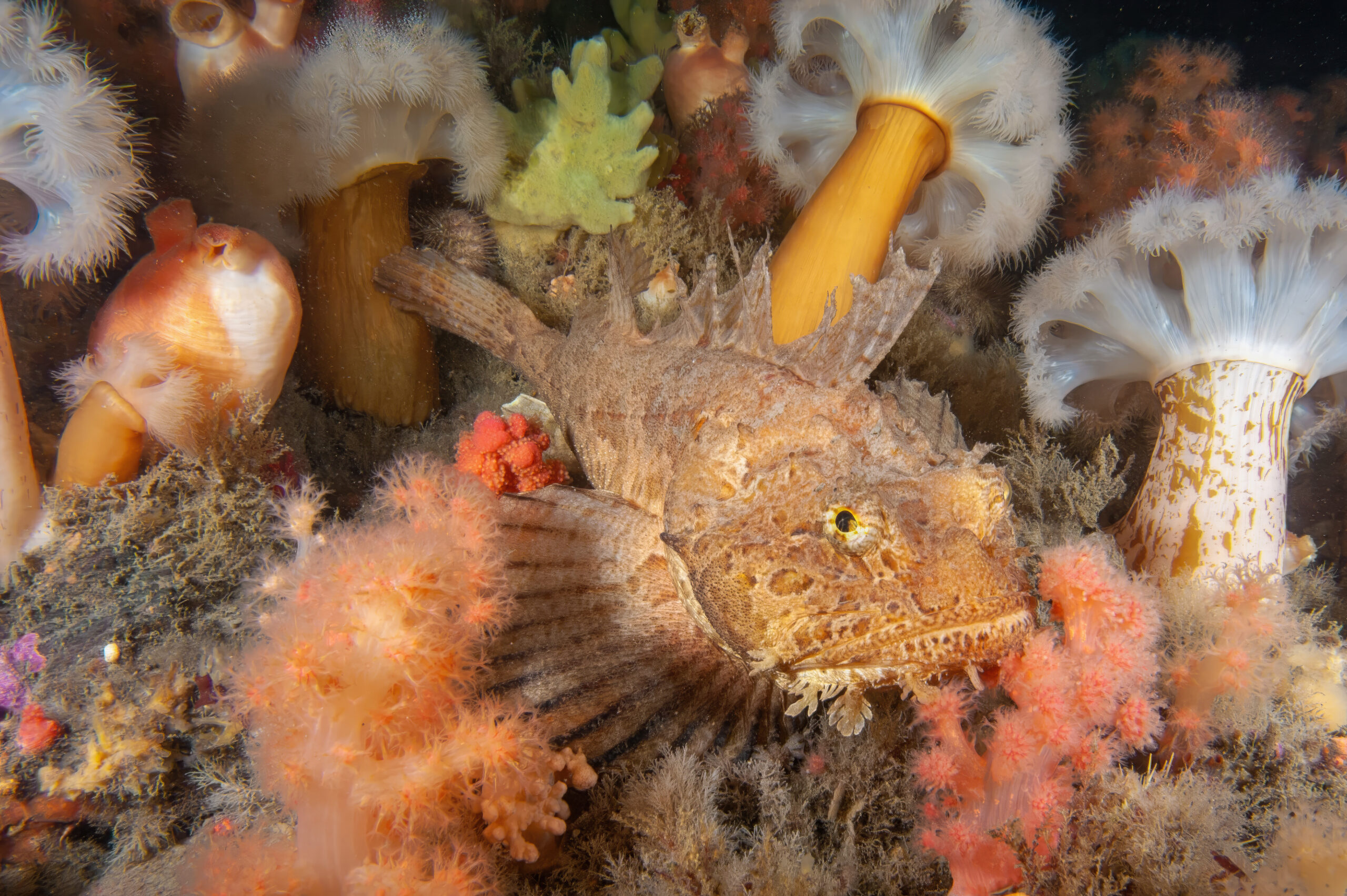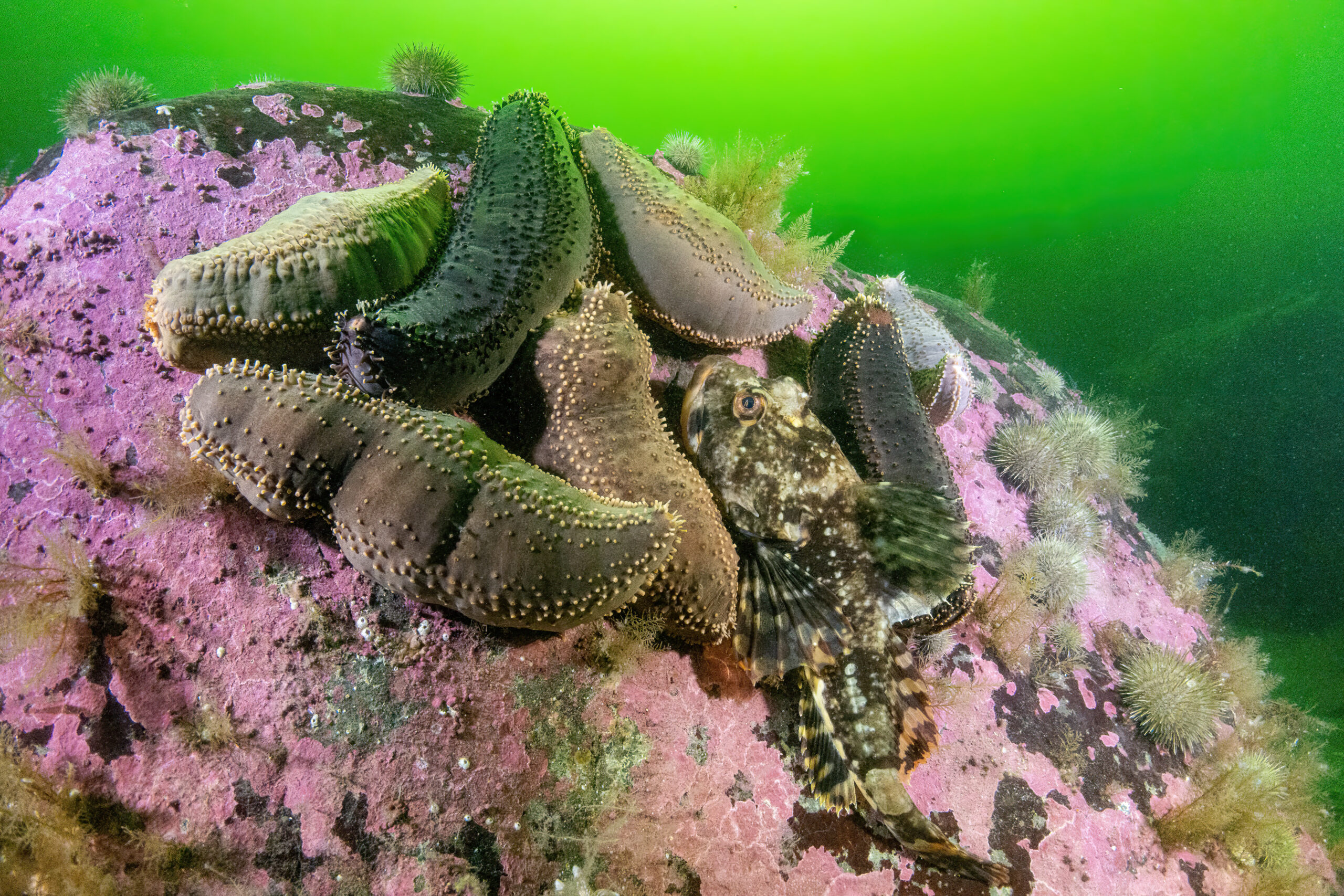
SIZE:
Up to 70 cm long.
LIFE EXPECTANCY:
Not determined.
LIFE CYCLE:
Females lay approximately 15,000 large spherical eggs that are pale yellow to orange. The eggs stick to small rocks or sponges, forming small clusters of 140 to 500 eggs. The sea raven then watches over its eggs. Spawning takes place from November to January.
The sea raven is a large fish that looks somewhat like a toad with its bulging eyes on top of its skull. The front of its body is stockier than the rest. Its broad head is flanked by a large oblique mouth with sharp teeth. Its fan-shaped pectoral fins are wide and rounded. Its tail is round.
It has multiple outgrowths, mainly on its head, and barbels below its jaw. The sea raven has spines on its back, and its dorsal fins appear to be shredded.
The sea raven’s colour can vary according to its environment. It can also modify the brightness of its colour: red becomes bright red to brownish red, and yellowish colouring becomes bright yellow to brownish yellow.
Close to the seabed, down to 180 m depth.
The sea raven prefers temperatures between −2 and 16 °C.

The sea raven lives on rocky or hard bottoms
Credit: Richard Larocque, photo taken in Les Méchins, at 15 m depth.
PREYS:
Small fish
Benthic invertebrates
PREDATORS:
No predators

Can you find the sea raven? Maybe it is simply too good at camouflage to have predators... Its morphology, pro-tuberances and ability to change colour make it imperceptible.
Credit: Richard Larocque, photo taken at la Baie des Capucins, at 15 m depth.
There is no managed fishing for sea raven in Québec.
It may be an incidental catch during bottom fishing (trawling) and lobster fishing (traps).
Chance for survival as incidental catch
Researchers have evaluated the sea raven’s reflexes and measured cortisol levels and other stress markers in their bloodstream. They found that there is little chance these fish survive if returned to the water, regardless of whether the sea raven has been hurt or not. So why not make use of them, right?
When it emerges from the water, the sea raven’s belly swells so much with air that it cannot dive back down for several minutes.
Sea raven is a Smarter seafood-listed species.
BENEFITS:
No information.
LET’S COOK:
It has a firm and flaky flesh and a rich and delicate flavour.
OUR CULINARY ADVICE:
- When cutting the fish, be careful with the spines at the end of the fins. They are very sharp.






